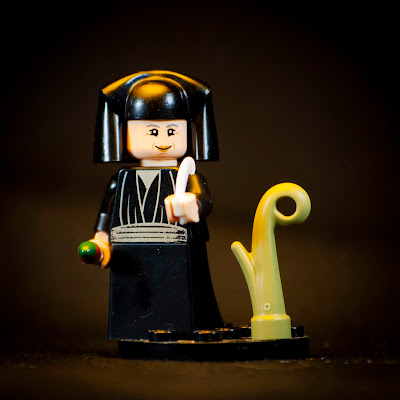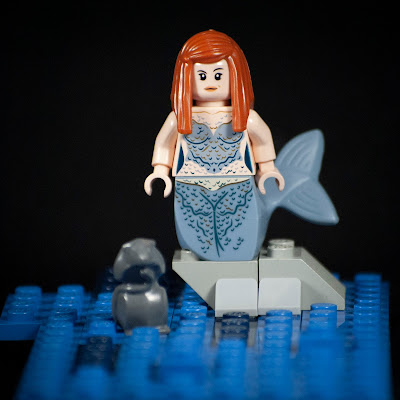St. Helena is famous for many things, one of the premier of which is being the mother of Emperor Constantine I, the first Roman emperor to convert to Christianity and in many ways the progenitor of the so-called "Holy Roman Empire".
However, St. Helena's accolades go much further than being a mother to one of the most influential figures in history. She is also credited with discovering the relic of the True Cross on which Jesus was executed, as well as (according to various accounts) several other relics including the nails of the crucifixion, the holy tunic, and the rope that tied Christ to the cross.
Helena was instrumental in founding churches at several holy sites, including the believed sites of the Nativity, the Ascension, and the Crucifixion of Jesus as well as the Burning Bush where Moses spoke to God. And for lovers of cats, according to tradition Helena imported hundreds of cats to Cyprus to solve a local snake problem, and is the reason for the Cyprus cat breed (also called Saint Helen cats!)
Lifetime: ~246 to ~330
Region: Turkey
Patronages: New discoveries; Divorcees; Converts
Iconograpy: Cross; Crown and queen's attire
Feast Day: August 18
Not much is known about Helena's early life. She is believed to be a native Greek, likely from a town named Helenopolis by her son after her death. She may have been a stable maid or innkeeper as a girl. At some point she met Constantius, a Roman serving under the Emperor. According to lore, Constantius saw that he and she were wearing matching silver bracelets and believed this a sign that they were soulmates. In any case, they married (in act if not in law), but the marriage did not last long, though it did produce a son named Constantine after his father. Her husband had been rising politically, and decided to instead marry a new wife more fitting of his station. Soon after the divorce, Constantinus became a Caesar, and eventually the Emperor of Rome.
However, with Constantinus' rise, Helena's son Constantine, with whom she was always very close, also rose. When his father died, Constantine was proclaimed Emperor and elevated his mother to an honored position. Eventually, Constantine and Helena both converted to Christianity, and formally stopped the Roman persecution of Christians as well as all other religions and cults in the Empire.
Along with their conversion came a great interest among Constantine and Helena regarding the Holy Land, the sites of Jesus' life and the gospel narrative. When she was nearly 80, Helena was granted unlimited access to the imperial treasury to locate the sites and relics important to their newfound faith.
Helena pilgrimed to Palestine, where she began her search for relics of the Crucifixion of Jesus and the locations where significant events of his life and passion occurred. Along the way, she founded the Church of the Nativity at the location of the "inn" Jesus may have been born at, and another at the Mount of Olives where he ascended back into heaven.
Continuing on her holy journey, Helena then found a temple dedicated to Venus located on the spot where many believed the site of Jesus' tomb was located. She demanded the temple be torn down, and according to legends, found three crosses buried beneath it. Unsure which was the True Cross used to crucify Jesus on the first Good Friday, Helena had a woman who was near death brought to her. She had the woman touch each cross in turn, and when she touched the True Cross, her illness was immediately healed, verifying which was the proper relic. The Church of the Holy Sepulchre, the holiest site in the Christian tradition, was built in the location of the crucifixion and burial of Christ.
But Helena wasn't done yet.
Legends abound regarding her pilgrimage around the holy land. Some claim that she found the untorn cloth that Jesus wore, which the guards cast lots for in fulfillment of Jewish prophecy. It is said she also found the nails used to nail Jesus to the cross, and had one placed in Constantine's helmet to ensure his protection with their miraculous power. She may have also located the ropes which bound Jesus to the cross and taken them to the island of Cyprus, where she stayed for a while.
During her stay on Cyprus, Helena heard of a monastery with a snake infestation. Having travelled widely, she recalled the many cats she had seen in Egypt and how adept they were at repelling snakes. She had two boatloads of cats imported to the monastery, which is known today as St. Nicholas of the Cats. The cat breed known as Cyprus cats (as well as Saint Helen's cats and Saint Nicholas' cats) may be descended from these.
Eventually, Helena returned to Rome, bringing relics from the True Cross and other relics to the private chapel in her palace, which was later converted to the Basilica of the Holy Cross in Jerusalem.
Helena died of old age, with her son at her side. She was buried in a site that became known as the Mausoleum of Helena near Rome. Her sarcophagus is located in that site to this day, though some of her relics have been relocated to other churches including in Trier, Paris, Rome, and Venice.






